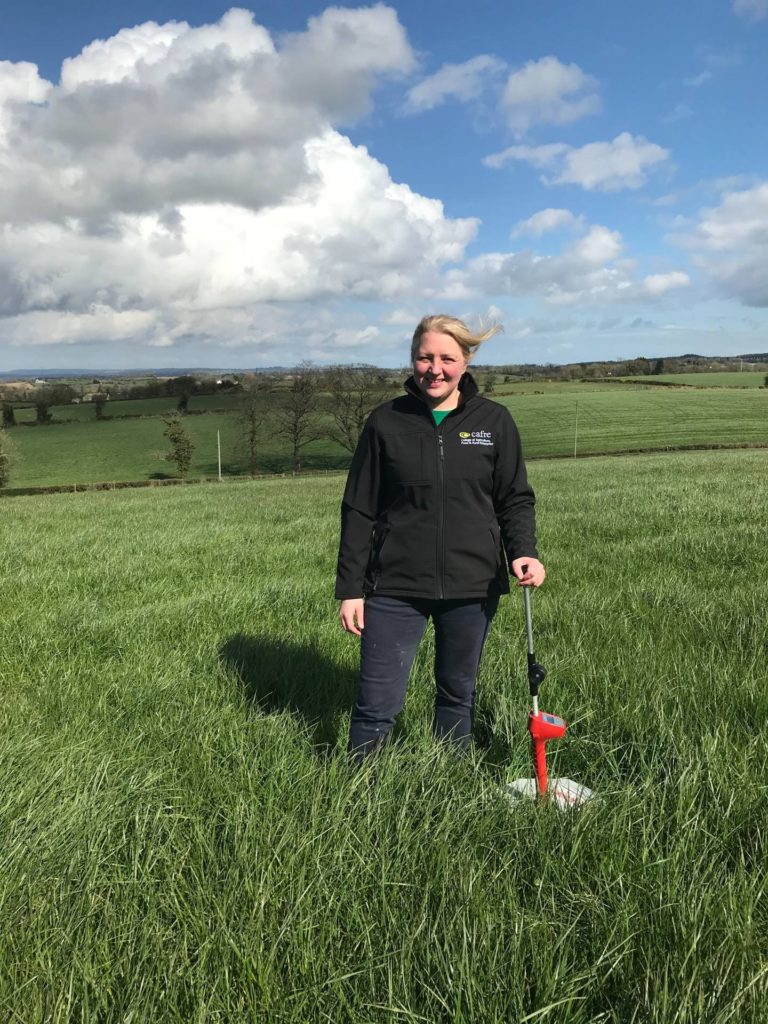Key Metrics to Managing Grass
May 11, 2021
The 2021 grazing season is now in full swing and is proving a challenge with poor early season growth rates. Grasscheck data from the last 4 years indicates that the daily grass growth rate on Northern Ireland dairy farms in May averaged 76 kg/dry matter per ha (kgDM/ha) over the month therefore on a 30 hectare farm around 71 tonnes of grass dry matter would be grown. At a daily growth rate of 60 kgDM/ha only 57 tonnes will be grown which is 20% less. Kathryn George, College of Agriculture, Food and Rural Enterprise (CAFRE) Dairying Development Adviser examines the numbers you need to know to help manage and utilise grass.
Kathryn says “managing grass is all about striking a balance between a number of key metrics including grass growth, stock demand, average cover and rotation length, while maintaining cow production. Starting off with stock demand we need to know the area that is available to graze as well as stock requirements”.
Taking an example herd of 120 cows with a total area of 30 ha available to graze gives a stocking rate of 4.0 cows/ha (120/30). If the cows are out day and night we generally assume a target intake of 16 kg grass DM, with the remainder of the diet fed as concentrate in the parlour. Grass demand is a function of stocking rate multiplied by grass intake so in this example is 64 kg DM/ha/day (4.0 cows/ha x 16 kg DM/cow). Therefore grass needs to grow at 64 kg DM/ha on a daily basis to meet requirements.
Now looking at grass supply, this needs to be measured as growth rate on a weekly basis. The most common tool for measuring grass is the rising plate meter, which measures compressed grass height and converts it to kg DM/ha through a calibrated equation. Even though growth rates reflect what has happened in the past, it forms the basis of decision making for the future. Actions to take will be dependent on what likely grass growth rates will be in the next week.

Average farm cover is an indicator of the quantity of grass on the grazing area. In the main season this should be maintained at around 2,200 to 2,300 kg DM/ha. Post- grazing residuals in well managed swards should be around 1,600 kg DM/ha. Target pre-grazing cover is calculated by allocating the daily herd demand (120cows x 16kg DM = 1920kg DM) to the daily grazing area. On a 20 day rotation this would be 1.5ha (30 ha/20 days) in this example, giving a herd demand of 1,280kg DM/ha (1,920kg DM/1.5ha). So pre-grazing cover should be the post-grazing cover plus the herd demand which is 2,880kg DM/ha in this example. The aim should then be to maintain an average cover during the mid-summer period of 2,240kg in this example (2,880 +1,600 = 4,480/2 = 2,240 kg DM/ha).
Rotation length is the number of days it takes to complete one cycle of the grazing area and during the main grazing season should be 20 to 24 days. The reason for targeting a 21 day rotation is due to the ryegrass plant maintaining 3 live leaves at one time. Under ideal conditions during the main growing season a new leaf emerges every 7 to 8 days with the ideal time to graze being between 2.5 and 3 leaves.
Kathryn concludes that “managing grass is not an exact science. However measuring grass growth and basing grazing decisions on this information helps to get the best out of it.” If you would like to discuss utilising grass better, please contact your local CAFRE Dairying Development Adviser.
